Ijraset Journal For Research in Applied Science and Engineering Technology
- Home / Ijraset
- On This Page
- Abstract
- Introduction
- Conclusion
- References
- Copyright
Study of Generative Design Using Autodesk Fusion 360
Authors: Ganesh Korwar, Manswi Bhelkar, Amey Bhombe
DOI Link: https://doi.org/10.22214/ijraset.2024.65536
Certificate: View Certificate
Abstract
This study explores the use of generative design in Autodesk Fusion 360 for improving knuckle joint design. By applying generative design principles, we created optimized designs specifically for additive manufacturing, which showed a significant reduction in von Mises stress compared to conventional designs. These results highlight the ability of generative design to develop structures that are more efficient and better suited for specific manufacturing processes. Overall, our findings suggest that generative design can optimize knuckle joints by lowering stress, reducing weight through careful material selection, and improving stiffness, offering valuable benefits for mechanical applications.
Introduction
I. INTRODUCTION
Generative design is revolutionizing the way engineers and designers approach the creation of optimized mechanical structures. As an iterative, algorithm-driven design process, generative design allows the exploration of thousands of potential solutions by leveraging artificial intelligence and complex algorithms. By setting specific design parameters such as material constraints, manufacturing methods, load conditions, and desired performance criteria—engineers can produce a variety of design alternatives that balance multiple objectives. This process not only accelerates innovation but also paves the way for more efficient, lightweight, and sustainable designs.
Generative design represents a departure from traditional design methodologies by allowing the computer to play a more active role in the creative process. Rather than manually creating a single design, engineers provide the software with a set of design goals and constraints, such as strength requirements, load conditions, material properties, and allowable manufacturing methods. The generative design software then produces a wide array of possible solutions, all of which meet the defined criteria to varying degrees. This provides engineers with a broader set of options to choose from, often resulting in highly efficient, unconventional designs that may not have been envisioned through traditional methods.
The importance of generative design is amplified in industries where performance, weight reduction, and material efficiency are critical. For instance, in the aerospace industry, weight savings can translate directly into fuel savings and improved performance. Similarly, in automotive applications, lighter and more efficient parts contribute to fuel efficiency and reduced emissions. By optimizing components for specific manufacturing methods like additive manufacturing, engineers can further enhance these benefits. Generative design’s ability to produce complex, lattice-based structures that traditional manufacturing would struggle to create opens new avenues for innovation.
This study focuses on using generative design in Autodesk Fusion 360 for the optimization of a knuckle joint. A knuckle joint is a crucial mechanical component often found in machinery that experiences high stress levels. This research specifically examines the application of generative design for enhancing the structural performance of knuckle joints by minimizing stress, reducing weight, and improving overall stiffness. Through this approach, we aim to demonstrate how generative design can lead to mechanically optimized components tailored to the specific requirements of modern manufacturing processes, especially in fields such as automotive and aerospace engineering. Chun Hyunjin [1] In the paper author explains how generative design, an advanced computer-aided design process, supports designers by creating innovative ideas for products. The author describes how this system works in manufacturing, where computers help engineers explore various design options based on specific goals—such as reducing weight, increasing strength, or optimizing materials.The paper emphasizes that generative design enables the creation of complex, efficient shapes tailored for specific manufacturing methods, especially additive manufacturing. Chun Hyunjin demonstrates that by setting design constraints, like material choice and performance needs, the system can quickly generate many design possibilities. This process allows manufacturers to select designs that best meet their requirements, resulting in stronger, lighter, and more cost-effective products. The author suggests that generative design can significantly improve manufacturing by streamlining the design process and producing innovative solutions that traditional methods might not achieve.
Prashil Raj Shrestha, Dipak Timalsina, Sabal Bista, Bim Prasad Shrestha, and Tejesh Man Shakya, [2] the authors discuss how generative design can improve the traditional product development process. They first explain the traditional approach to product development, noting the challenges it faces, such as time-consuming iterations, limited design options, and difficulties in meeting specific performance and cost targets. The authors then introduce generative design as a modern solution, where computers use algorithms to create multiple design options based on specified parameters, like material type, strength requirements, and manufacturing method. They describe how, by setting these parameters and using powerful computational tools, generative design quickly generates various innovative designs that meet specific goals.
In addition, the paper explains how these generated designs are evaluated using certain criteria to identify the most suitable option for production. Overall, the authors highlight that generative design helps streamline product development by producing optimized, creative solutions more efficiently than traditional methods.
Ryan McClelland [3] explores how AI and robotics help create lighter, more efficient instruments used in industries like aerospace, automotive, and electronics. The paper highlights why lightweight instruments are so important—they reduce fuel consumption, improve performance, and lower production costs. McClelland explains that generative design, combined with AI, allows engineers to develop these lightweight structures by generating many design options that meet specific goals, such as strength, weight reduction, and durability. Robots then play a role in manufacturing these optimized designs by accurately building complex shapes that are often difficult to create with traditional techniques.
Overall, the paper shows how AI and robotics together can streamline the process of designing and manufacturing lightweight instruments, helping to make products that are not only strong and efficient but also tailored for specific industry needs.
Francesco Buonamici, Monica Carfagni, Rocco Furferi, Yary Volpe, and Lapo Governi [4] the authors explore how generative design works and what benefits and challenges it brings. They conducted a study to understand generative design more deeply, examining how it can be applied to improve product design and development. The authors describe the process they used in this study, including how they collected data, analyzed results, and used specific tools and software to test generative design. Through this approach, they gained insights into how generative design can help create innovative solutions but also identified challenges, such as the complexity of using the technology and the need for specialized skills. The paper outlines both the difficulties they faced and the potential opportunities generative design offers, highlighting that while it requires certain resources, it has a lot of potential to transform the design process by enabling more efficient and creative outcomes.
M Pollak, M Kociško, J Dobránsky [5] This paper discusses the advantages and capabilities of generative design, a modern approach to creating optimized products. The authors explain how generative design allows for the rapid creation of numerous design options, overcoming the limitations of traditional design methods that depend on a designer's imagination and manual iterations. This approach is especially useful for developing lighter, stronger, and more cost-effective products that meet specific user needs.
Generative design software is described as intuitive and user-friendly, requiring minimal additional expertise to operate compared to traditional CAD systems. By focusing on material efficiency, the software only adds material where it is structurally necessary, making it well-suited for additive manufacturing processes that create organic shapes and forms. This method results in designs that are not only optimized for performance but also reduce material usage, save production costs, and streamline the design process.
The paper also highlights the current development trends in generative design technology and provides examples of software tools and the products created with them. Through these examples, the authors emphasize how generative design is transforming the traditional design and manufacturing process into a more efficient and innovative approach.
Anton Nemme and Roderick Walden [6] This paper explores how generative design and topology optimization can be integrated into product design while maintaining the core design values of creativity, intuition, and hands-on exploration. These advanced computer-aided design (CAD) tools use algorithms to create and optimize structures
and surfaces, making them increasingly important in designing efficient, functional, and innovative products. The authors highlight that while generative design and topology optimization are powerful tools, they pose challenges in design education. One challenge is balancing the computational process with traditional design practices like sketching, prototyping, and iterative "making." Another challenge is addressing the reliance of these tools on 3D printing, which may limit their practicality for manufacturing end products unless further modifications are made.
The paper presents a case study where these tools were used to design a mountain bike crank arm, integrating topology optimization simulations into the design process. The study aims to inform the development of a new studio-based subject for product design students, focusing on blending CAD tools with hands-on design practices.
The authors propose an integrated design approach that combines the iterative, creative process of traditional design with the advanced capabilities of CAD tools. This method encourages responsible and experiential learning in product design, manufacturing, and engineering, preparing students for future challenges in these fields.
Bashu Aman [7] This paper focuses on the advantages of generative design in improving product performance, reducing weight, and its broader industrial applications. The author explains how generative design uses advanced algorithms to create optimized structures that are lighter, stronger, and more efficient than traditional designs. This approach not only enhances the functionality of products but also reduces material usage and production costs, making it a valuable tool for industries.
The paper highlights how generative design allows designers to explore multiple design alternatives quickly, enabling the creation of innovative solutions tailored to specific needs. It also discusses the integration of generative design into various industries, such as aerospace, automotive, and consumer goods, where weight reduction and performance optimization are critical.
Overall, the paper emphasizes the potential of generative design to revolutionize manufacturing processes, improve product efficiency, and address sustainability goals by minimizing resource consumption and enhancing production methods.
N. Srinivasan, Aritra Sanyal, Tanishq Bheda, Leo Harshwardhan [8] This paper explores the use of generative design to create an optimized disc brake design that is lighter while maintaining its performance. Disc brakes are a critical part of a vehicle's braking system, but they are usually heavy, which increases wear and inertia. The authors aimed to reduce the weight of the brake disc to less than 2 kg while ensuring it could withstand the mechanical forces and heat generated during braking.
Generative design was applied in the early stages of the design process using Autodesk Fusion 360 to create a brake disc that precisely met the necessary performance requirements. The research focused on ensuring the disc maintained sufficient stiffness to handle braking forces and dissipated heat effectively to prevent brake fading. Design features like drilled holes and air ventilation channels were incorporated to improve airflow and maintain optimal temperatures during braking.
By comparing the new generative designs with traditional ones, the study demonstrated that it is possible to significantly reduce the weight of the brake disc while maintaining functionality. The research also highlighted the challenges and limitations of current generative design technology and its potential to become a standard method for design optimization in the future.
II. METHODOLOGY
To optimize the knuckle joint, we began with a theoretical design. This initial stage focused on defining the basic geometry, load conditions, and functional requirements of the knuckle joint to ensure it met key structural and operational needs. Through this theoretical approach, we established critical areas that required preservation for the joint’s functionality, along with material properties to guide the design process. After completing the theoretical design, we proceeded to model the knuckle joint using CAD software. This modeling stage involved creating a detailed representation of the joint, incorporating necessary features, dimensions, and constraints based on the theoretical setup. During this stage, we identified specific areas for preservation, known as “preserve geometry,” which are essential for the joint's function. We also defined "obstacle geometry" areas that needed to remain free to allow movement and clearance for surrounding components. This CAD model served as a reference for setting up the generative design process and facilitated realistic constraints and load applications. With the initial model prepared, we then set up the generative design in Autodesk Fusion 360. This involved a sequence of preparatory steps.
First, we defined preserve geometry to mark areas of the knuckle joint that must remain unchanged, ensuring essential load-bearing and connection points were maintained. Next, we defined obstacle geometry by identifying regions that the generative design should avoid, allowing necessary space for movement and interactions with adjacent parts. We selected a rough starting shape to guide the software, aiming to keep the design close to the desired overall form. Structural constraints were applied to set boundaries within which the joint design could take shape. To simulate real-world operating conditions, we applied structural loads in the form of compression, tension, and bending forces. Finally, we selected materials appropriate for the joint’s requirements, balancing factors such as weight, strength, and cost to meet performance criteria.
Upon completing the setup, we executed the generative design process. Autodesk Fusion 360 generated multiple design options that fulfilled the specified constraints, loads, and material properties. Each design option featured a unique structural configuration optimized for handling applied loads while minimizing material use, providing a range of possibilities for further evaluation. Following the generative design stage, we analyzed both the generated designs and the initial manual design. This analysis included examining the von Mises stress distribution, weight, and overall structural efficiency of each option. By comparing the generative and manual designs, we assessed the degree to which each solution met project goals in terms of durability, material efficiency, and weight optimization.
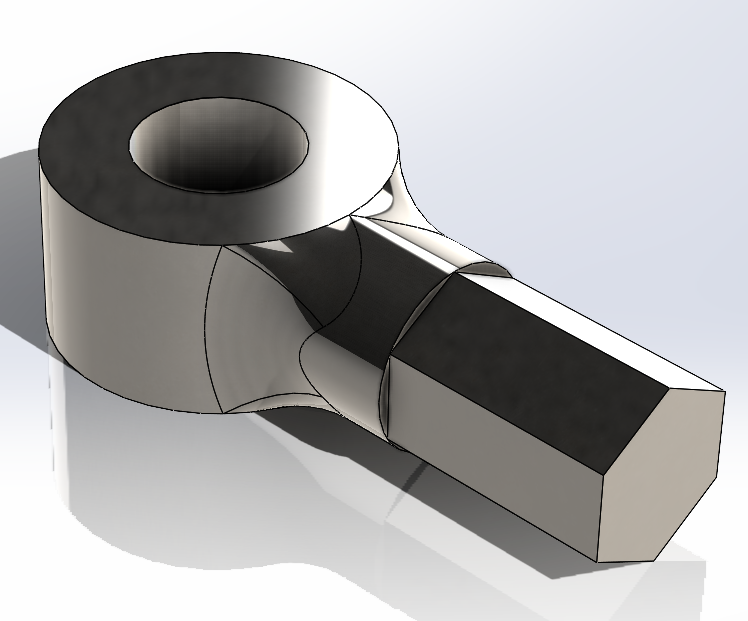
Fig.1 Single Eye
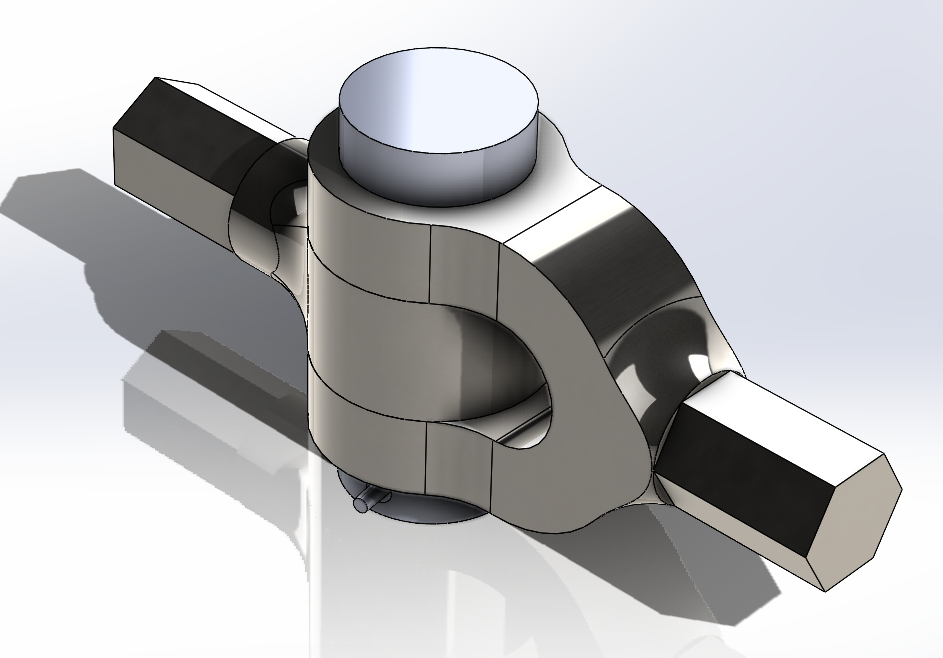
Fig. 2 Knuckle Joint Assembly
Based on this analysis, we selected the most suitable design from the generative options, focusing on a model that offered a balanced combination of strength, weight reduction, and manufacturability. This selected design demonstrated significant improvements over the manual design in terms of efficiency and performance.
After choosing the optimal design, we made final adjustments to ensure it was ready for production. This finalization included refining specific details, verifying dimensions, and checking compatibility with the larger assembly requirements. The finalized design was then prepared for practical application, completing the methodology for optimizing the knuckle joint through generative design and theoretical analysis. This approach provided a comprehensive understanding of the advantages generative design brings in achieving a high-performance, lightweight knuckle joint.
Constraints
• Design Constraints:
Preserve Geometry
Obstacle Geometry
Bearing pressure (In different angles)
• Manufacturing Constraints
Additive Manufacturing
Overhang angle of 50 Degrees
Minimum layer thickness of 0.05 mm
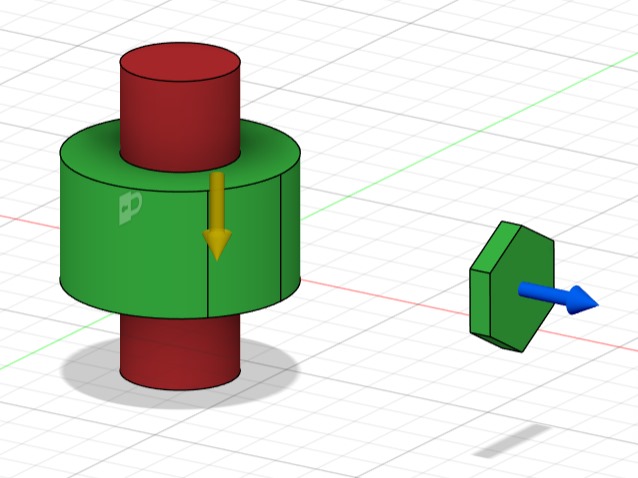
Fig. 3 constraints
III. GENERATIVE DESIGN OUTPUT FOR SINGLE EYE AND FORK
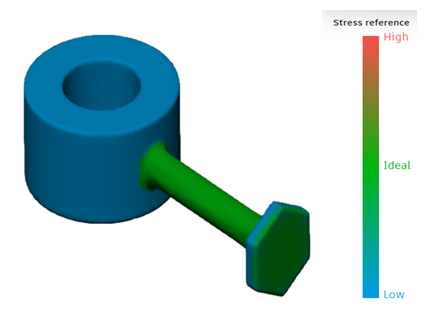
Fig. 4 Single Eye
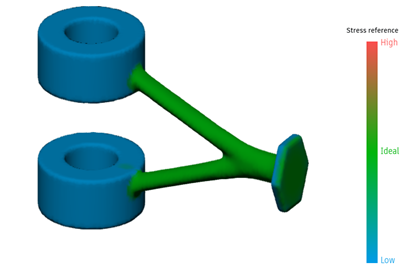
Fig. 5 Fork Eye
IV. RESULT OF SINGLE EYE

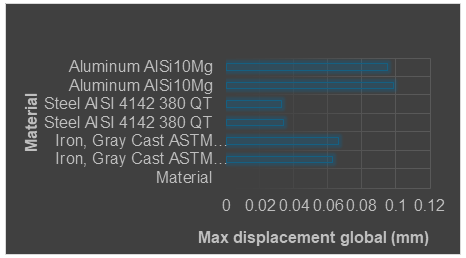
V. RESULT OF FORK
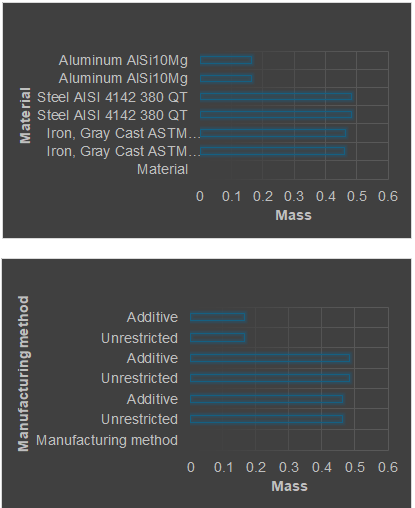
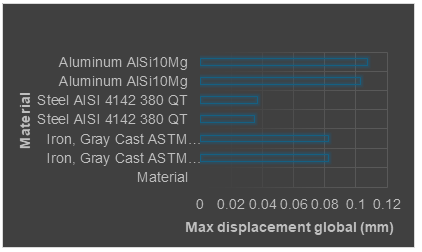
VI. GENERATIVE DESIGN
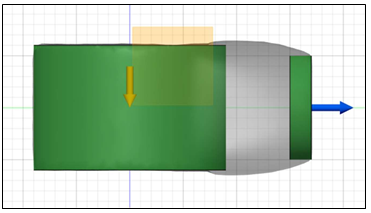
Fig. 06 Generative Design process for Single eye
VII. DIFFERENCE BETWEEN GENERATIVE DESIGN AND TOPOLOGY OPTIMIZATION
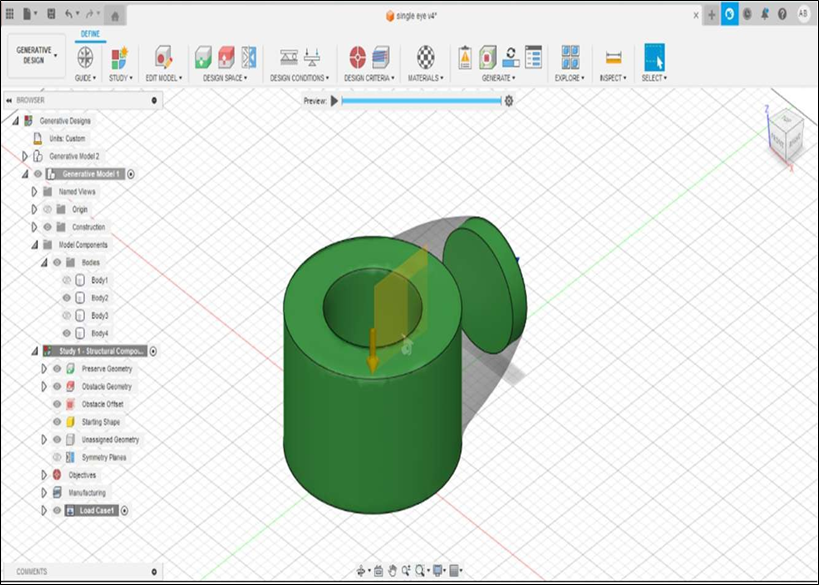
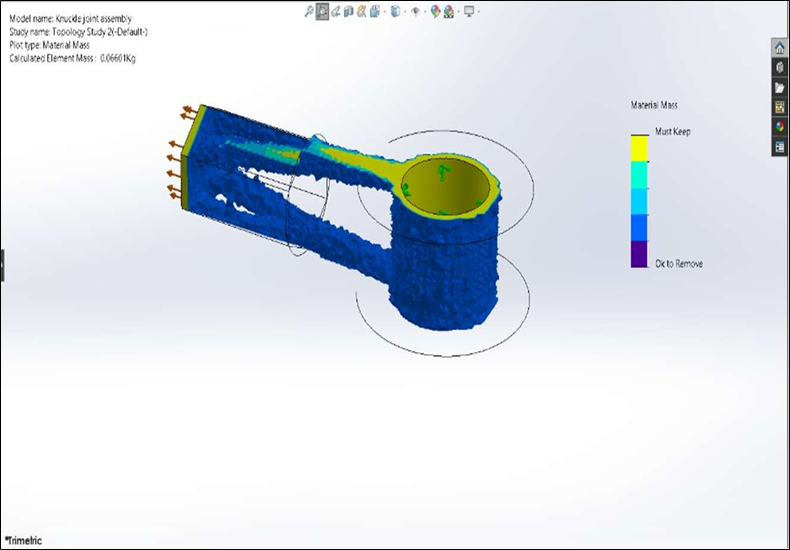
Fig.7 Generative design and topology optimization
Topology optimization and generative design are advanced design methodologies used in engineering but differ significantly in approach and application. Topology optimization focuses on optimizing material layout within a predefined design space to meet specific objectives, such as reducing weight while maintaining structural integrity. It works by removing unnecessary material based on input parameters like load conditions and constraints, resulting in a single optimized design.
In contrast, generative design is a more innovative approach that leverages AI to create multiple feasible design alternatives based on input criteria, including material, manufacturing methods, and performance requirements. Unlike topology optimization, which modifies an existing design, generative design explores entirely new solutions, offering users various options to choose from. While topology optimization is primarily used for structural efficiency, generative design is often applied in complex and creative product development processes. Both methods enhance efficiency but differ in their level of automation and creative potential.
VIII. DESIGN OF SINGLE EYE
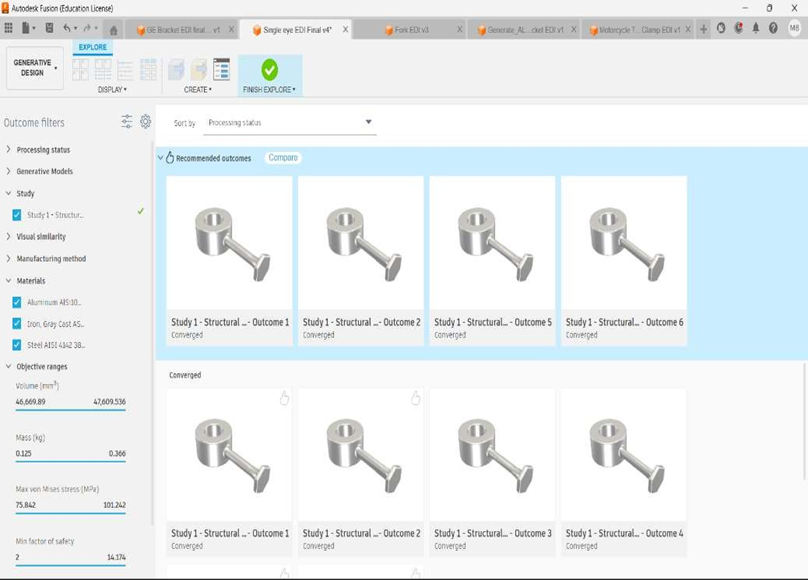
IX. DESIGN OF FORK
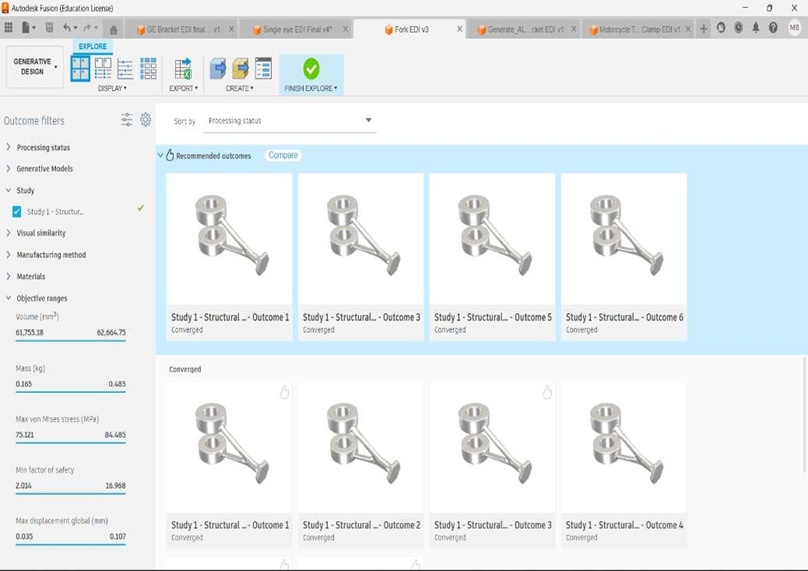
Conclusion
In conclusion, our project demonstrated that generative design can greatly improve knuckle joint performance, particularly when optimized for additive manufacturing. Designs generated with this method showed much lower von Mises stress, meaning they can better withstand forces without deforming. This approach allows us to create more efficient structures that are lighter and stronger by carefully choosing materials and reinforcing areas that need it most. Overall, generative design has shown clear potential to create knuckle joints that are not only optimized for specific manufacturing methods but also offer significant improvements in strength, durability, and weight efficiency.
References
[1] Chun Hyunjin \"A Study on Application of Generative Design System in Manufacturing Process\". [2] Prashil Raj Shrestha, Dipak Timalsina, Sabal Bista, Bim Prasad Shrestha, Tejesh Man Shakya \"Generative design approach for product development\" [3] Ryan McClelland \"Generative Design and Digital Manufacturing: Using AI and robots to build lightweight instruments\". [4] Francesco Buonamici, Monica Carfagni, Rocco Furferi, Yary Volpe and Lapo Governi \"Generative Design: An Explorative Study\". [5] M Pollak, M Kociéko, J Dobrånsky \"Analysis of software solutions for creating models by a generative design approach\". [6] Anton Nemme and Roderick Walden \"Integrating generative design and topology optimisation with product design values\". [7] Bashu Aman \"Generative Design for Performance Enhancement, Weight Reduction, and its Industrial Implications\". [8] N. Srinivasan, Aritra Sanyal, Tanishq Bheda, Leo Harshwardhan \"Design Development and Optimization of Disc Brake Using Generative Design on Fusion 360\".
Copyright
Copyright © 2024 Ganesh Korwar, Manswi Bhelkar, Amey Bhombe. This is an open access article distributed under the Creative Commons Attribution License, which permits unrestricted use, distribution, and reproduction in any medium, provided the original work is properly cited.

Download Paper
Paper Id : IJRASET65536
Publish Date : 2024-11-26
ISSN : 2321-9653
Publisher Name : IJRASET
DOI Link : Click Here
 Submit Paper Online
Submit Paper Online

